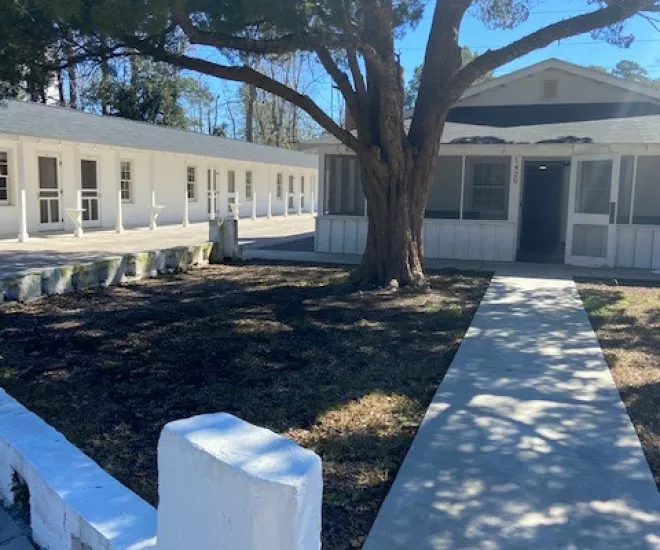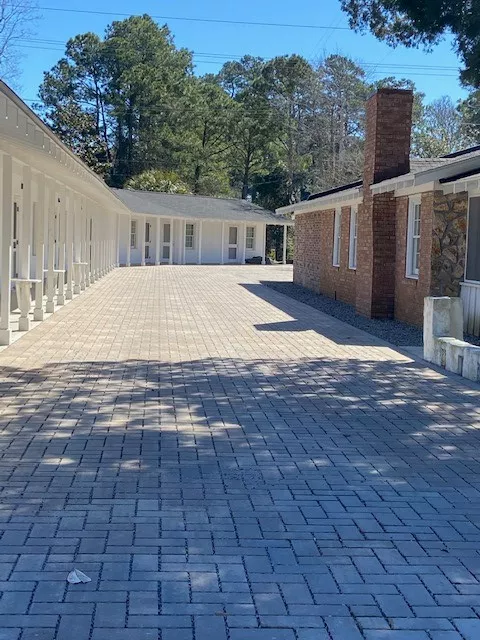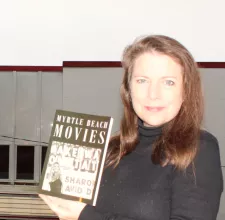Little Richard’s Early Days in Myrtle Beach

Myrtle Beach is music history
Many people know that Myrtle Beach served as the incubator for the greatest country music act of all time, Alabama. Three cousins from Fort Payne, Alabama, were the house band from 1973 to 1980, at The Bowery. It is a club that has been welcoming visitors and locals just steps away from the beach on 9th Avenue North since 1944. When the band started out, they called themselves Young Country. Then in 1977, they changed their name to Wild Country and then changed it again to Alabama in 1979. When they came back to Myrtle Beach in 2019 to play the Carolina Country Music Festival (CCMF), they were Country Music Hall of Fame legends with 40 #1 hits and countless awards. In truly a full-circle moment, the main stage of the CCMF was right next door to The Bowery which serves as a local historic site that commemorates their early years before hitting the big time.
Turns out, Myrtle Beach may have been the incubator, albeit briefly, for the greatest architect of rock ‘n’ roll, Little Richard. When I came across that significant piece of history, I thought that should be commemorated too. And, after a possible paranormal encounter, it just might.
In his book, Greek Boy, Dino Thompson, who is a beloved local historian and a second-generation restaurateur, tells about the time when he was a boy and one of his Dad’s cooks named Wild Bill Sessions from their family diner, The Kozy Corner, took Dino to a club on The Hill (an African American neighborhood during segregation) called Charlie’s Place to hear Little Richard sing. Because he was so small, they sat Dino on the end of the stage. He describes the incredible experience of being in such close proximity to the soon-to-be legendary Richard Penniman while he sang, screamed and played the piano with his head, his hands, his elbows and feet.
The club is no longer here, but Charlie and Sarah Fitzgerald’s original home and a replica of their motel is at the Charlie’s Place Historic Site, owned by the City of Myrtle Beach in what is now called the Booker T. Washington Neighborhood. It is mind boggling that the biggest names in 20th century music played at that location from the 1930s to the 1960s.
Another historian, Frank Beacham, has written about Charlie’s Place, and the list of musical acts who performed there who all became household names. It was he who wrote that Richard Penniman stayed on at the Fitzgerald Motel for a few months just as he was becoming famous.
There is a legend from that time period that seems plausible. As he prepared for his new-found fame, Penniman would need to efficiently transport a band and equipment to each show and would need an appropriate vehicle. Oral history says that, while living here, he went up to Atlantic Beach, what was then a segregated town for African Americans, which is still nestled today amid North Myrtle Beach. Up there he met with an entrepreneur, Millard Rucker, who owned the town’s first amusement park and a restaurant called the Baby Grand. The legend is that Mr. Rucker sold Little Richard a hearse to haul his equipment.
When I discovered that Little Richard had temporarily considered the Fitzgerald Motel his residence, that inspired me to work with others to create a museum room that would be set up in the way he would have had it while he was here. I ordered his autobiography online and scoured it for information about his time on the Grand Strand but came up with very little intel. However, there was useful information from those early days on what he would wear and what cosmetics he would use. I envisioned an old dresser with a mirror with these products on display, and a costume hanging on the closet door, ready for the next performance.
One day on my tour that goes to Charlie's Place I had a guest who discreetly shared with me that she was a medium and that she could hear the voices of those who had once been at the club and in the motel. In fact, she said that there were a lot of voices and that they were loud, with one of the loudest belonging to Little Richard.
On a couple of my other tours, I tell local ghost stories, but I don’t have the ability to see ghosts or communicate with those who are no longer with us. But I do enjoy those television shows on cable where people purport to do those things and even have equipment to back up their findings. I can’t prove that any of that is true. I can’t disprove it either.
So, if I truly had an audience with Little Richard, I thought I had better take advantage of it because who knew if that opportunity would ever come around again. My chief concern was that he was okay with me telling people about him and my pursuit to create a museum room dedicated to him, and she received an affirmative response to both.
Now it was time for some historical research the likes I’d never experienced. Since the shoes Dino remembers him wearing were purple suede, I asked if the costume he wore that night at his Charlie's Place concert, that I wanted to replicate and have hanging in that room, was also purple. My guest was quiet for a moment and then responded with what she told me was a direct quote, “Honey, I had more than ONE costume.”
Well, it certainly felt like we were in communication with the best source of information, so I went deeper. If I were able to get this museum room created, where should it be? Was his room close to the front and further to the back? This final answer took me by surprise. She said that the room was “in the corner.”
When you stand on the sidewalk and look at Charlie’s Place, you see the original house in the middle, the lawn where the club used to be on the right, and a straight line of museum rooms, business incubators, and the remaining rooms for meeting spaces and storage on the left. But that’s not entirely accurate.
In fact, I was just about to tell the lady that her last transmission didn’t make sense as she and I stepped out the door of one of the front rooms that we were in for me to show her that the rooms were in a straight line. But they aren’t.

Beyond the business incubators, the building angles to the right at the back creating a CORNER ROOM. I had NEVER noticed it. When I asked the site coordinator what that room was used for, he said storage…
I had found the future Little Richard Museum Room! That was an unforgettable moment. Now, the work begins. I need to find people who can help curate the space. Full disclosure: I’m hoping that someone reading this will reach out with information about that lost chapter of Little Richard’s history or perhaps donate actual or period-appropriate artifacts to put on display.
Then, of course, I need to convince the City of Myrtle Beach to allow the project to commence. For years, I’ve been sharing my vision with the Neighborhood Services Department who is in charge of the site. Perhaps one day, we’ll cut the ribbon on a space dedicated to one of the most influential people in American music who, for a brief period, called Myrtle Beach home.
